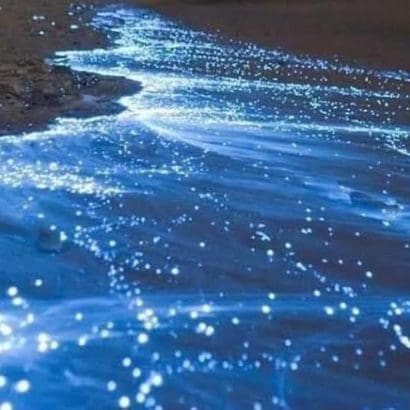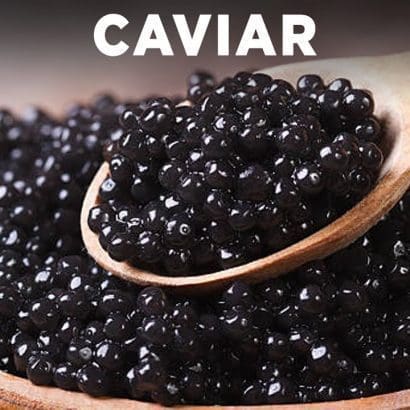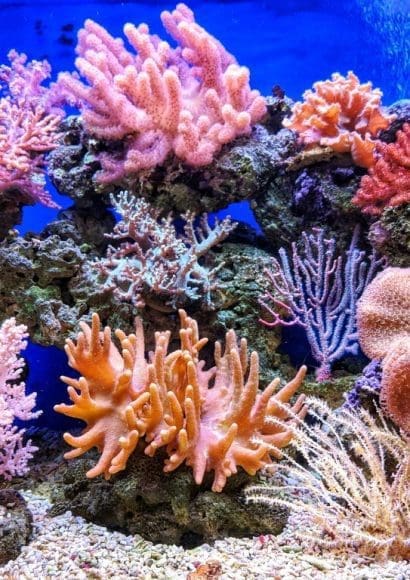
Coral reefs are some of the most breathtaking and diverse ecosystems on our planet. These vibrant underwater habitats are not only crucial for marine life but also captivate the human imagination with their stunning array of colors. If you’re an avid traveler or a passionate diver, you might be wondering, “Where can you find the most colorful coral reefs in the world?” In this article, we will embark on an exploration of the globe, uncovering the destinations that boast the most vibrant and mesmerizing coral reefs. From the renowned Great Barrier Reef in Australia to the enchanting islands of Fiji, we will delve into the depths of these underwater wonders and discover the kaleidoscope of colors that await. Join us on this journey as we unveil the most captivating and awe-inspiring coral reefs our planet has to offer. Get ready to be immersed in a world of vibrant hues and unparalleled beauty as we discover where the most colorful coral reefs are found.
Contents
What is a coral reef?
A coral reef is a unique and diverse marine ecosystem formed by the accumulation of coral polyps, which are tiny invertebrate animals that belong to the phylum Cnidaria. These polyps secrete a hard calcium carbonate skeleton that provides the framework for the reef structure. Over time, as new generations of coral polyps grow on top of the remains of their predecessors, the reef continues to expand and develop.
Coral reefs are often referred to as the “rainforests of the sea” due to their exceptional biodiversity and vibrant colors. They can be found in warm, clear tropical and subtropical waters around the world, predominantly in the Pacific Ocean, Indian Ocean, and the Caribbean Sea.
Great Barrier Reef, Australia.
The Great Barrier Reef is one of the world’s most renowned natural wonders, stretching over 2,300 kilometers (1,430 miles) along the northeastern coast of Australia. This extraordinary ecosystem is not only the largest coral reef system globally but is also a UNESCO World Heritage site. Let’s explore the fascinating beauty and ecological significance of the Great Barrier Reef.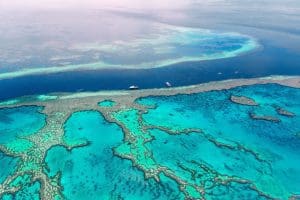
Size and Biodiversity:
The Great Barrier Reef is a vast expanse of coral reefs, islands, and cays, covering an area of approximately 344,400 square kilometers (133,000 square miles). It is home to a staggering diversity of marine life, comprising more than 1,500 species of fish, 600 species of coral, and countless other species, including sea turtles, sharks, dolphins, and whales.
Coral Reefs:
The reef system consists of nearly 3,000 individual reefs, formed by millions of coral polyps. The corals exhibit a breathtaking array of colors, ranging from vivid blues and greens to vibrant oranges, pinks, and purples. Hard corals, such as brain corals and staghorn corals, dominate the reef structure, providing habitats for a multitude of marine organisms.
Marine Life:
The Great Barrier Reef teems with an abundance of marine species. Schools of colorful tropical fish, such as clownfish, angelfish, and parrotfish, traverse the reefs. Giant clams, sea cucumbers, and starfish can be spotted resting on the seabed. The reef also serves as a crucial breeding ground for numerous species of turtles, including the green sea turtle and the loggerhead turtle.
Conservation Efforts:
Due to its ecological significance and vulnerability, the Great Barrier Reef is subject to extensive conservation efforts. The Australian government, along with various organizations, is committed to preserving and protecting this natural wonder. Measures include the establishment of marine protected areas, strict regulations on fishing and boating, and initiatives to reduce pollution and mitigate the impacts of climate change.
Tourism and Recreation:
The Great Barrier Reef attracts millions of visitors each year who come to witness its unparalleled beauty. Snorkeling and scuba diving are popular activities, allowing visitors to explore the vibrant coral gardens and encounter an array of marine life up close. Other recreational options include boat tours, sailing, and aerial views via helicopter or seaplane.
Maldives Islands.
The Maldives Islands, a tropical paradise nestled in the Indian Ocean, are renowned for their breathtaking natural beauty, pristine beaches, and crystal-clear turquoise waters. One of the most captivating features of these islands is the remarkable coral reefs that surround them. Let’s explore the coral reefs in the Maldives Islands and discover the wonders they hold.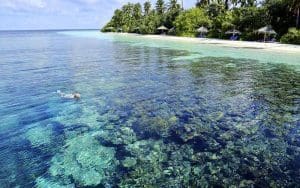
Coral Diversity:
The coral reefs in the Maldives Islands exhibit an astonishing diversity of species. The reefs are predominantly composed of hard corals, including branching corals, table corals, and boulder corals. These corals form intricate structures, creating a vibrant underwater landscape. The reefs also host a wide range of soft corals, sea fans, and sponges, adding to the overall splendor of the ecosystem.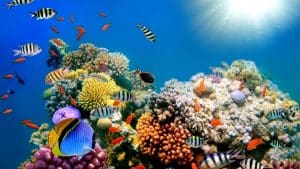
Colors and Marine Life:
The coral reefs in the Maldives Islands are renowned for their vivid colors, ranging from vibrant shades of pink, orange, and purple to striking hues of blue, green, and yellow. These vibrant colors provide a stunning backdrop for the diverse marine life that thrives in these waters. Snorkelers and scuba divers can encounter an array of marine species, including colorful reef fish, graceful sea turtles, graceful manta rays, and even the occasional reef shark.
Coral Gardens:
The Maldives Islands are home to extensive coral gardens, where coral colonies flourish in shallow, nutrient-rich waters. These gardens provide crucial habitats for a variety of marine organisms, serving as nurseries and feeding grounds. Exploring these coral gardens is a delight, as one can witness the intricacy and beauty of the coral structures up close.
Conservation Efforts:
Recognizing the importance of protecting these fragile ecosystems, the Maldives government and local organizations have implemented several conservation measures. Marine protected areas have been established to safeguard the reefs and restrict destructive fishing practices. Sustainable tourism practices and environmental education programs also play a significant role in preserving the coral reefs for future generations.
Snorkeling and Diving:
The Maldives Islands offer exceptional opportunities for snorkeling and scuba diving enthusiasts. Numerous resorts and dive centers provide guided excursions to explore the magnificent coral reefs. Snorkelers can enjoy the shallow reefs close to the shore, while divers can venture deeper to discover hidden treasures, such as underwater caves and vibrant coral walls.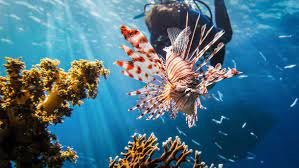
Phi Phi Islands, Thailand
The Phi Phi Islands, located in the Andaman Sea off the western coast of Thailand, are a true tropical paradise renowned for their stunning natural beauty. These islands, consisting of Phi Phi Don and Phi Phi Leh, offer visitors a mesmerizing blend of turquoise waters, towering limestone cliffs, and pristine white sandy beaches. Let’s delve into the allure of the Phi Phi Islands and discover the coral reefs that lie beneath their shimmering surface.
Coral Reef Diversity:
The Phi Phi Islands are surrounded by a diverse array of coral reefs that are teeming with marine life. These reefs are predominantly composed of hard corals, with an assortment of branching corals, table corals, and brain corals adorning the underwater landscape. The reefs also feature soft corals, sea fans, and anemones, creating a rich tapestry of colors and textures.
Marine Biodiversity:
The coral reefs of the Phi Phi Islands harbor an impressive variety of marine species. Snorkelers and divers can encounter a kaleidoscope of tropical fish, including angelfish, butterflyfish, parrotfish, and clownfish. Alongside the vibrant fish, you may also spot other fascinating creatures such as sea turtles, moray eels, and even reef sharks. The abundance of marine life in these waters makes exploring the reefs an unforgettable experience.
Snorkeling and Diving:
The Phi Phi Islands offer excellent opportunities for snorkeling and diving enthusiasts of all levels. Numerous dive sites are scattered around the islands, catering to both beginners and experienced divers. Whether you choose to snorkel near the shallow reefs or venture deeper with scuba gear, you’ll be rewarded with the chance to witness the beauty and diversity of the underwater world.
Maya Bay and Phi Phi Leh:
One of the most iconic attractions of the Phi Phi Islands is Maya Bay, located on Phi Phi Leh. Made famous by the film “The Beach,” this picturesque bay features crystal-clear waters and towering limestone cliffs. While Maya Bay has faced environmental challenges due to overtourism, efforts are being made to preserve and restore its coral reefs. Snorkeling and diving trips to nearby sites, such as Shark Point and Palong Bay, provide alternative opportunities to explore the thriving marine ecosystems.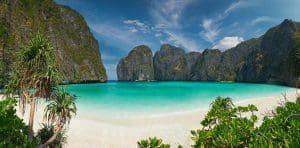
Environmental Conservation:
Recognizing the fragility of the coral reefs and marine ecosystems, local authorities and conservation organizations are implementing measures to protect and preserve the natural beauty of the Phi Phi Islands. Sustainable tourism practices, including the limitation of visitor numbers and the promotion of responsible snorkeling and diving, are being encouraged to mitigate the impact on the reefs.
Fiji Islands.
The Fiji Islands, nestled in the heart of the South Pacific, are renowned for their pristine beaches, crystal-clear waters, and warm hospitality. Beyond their stunning natural beauty, these islands are also home to some of the world’s most spectacular coral reefs. Let’s explore the coral reefs in the Fiji Islands and discover the wonders that lie beneath the surface.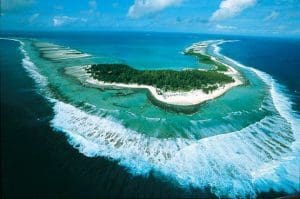
Coral Diversity:
The coral reefs in the Fiji Islands exhibit an impressive diversity of coral species, creating a kaleidoscope of colors and shapes. Hard corals, such as brain corals, staghorn corals, and plate corals, dominate the reefs, providing a solid framework for the ecosystem. Soft corals, including sea fans, whip corals, and mushroom corals, add a delicate and ethereal beauty to the underwater landscape.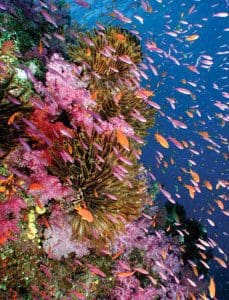
Marine Biodiversity:
The coral reefs in the Fiji Islands are teeming with a rich array of marine life. Snorkelers and divers can encounter a vibrant tapestry of tropical fish, including clownfish, butterflyfish, damselfish, and angelfish. The reefs also host an abundance of marine species, including sea turtles, reef sharks, rays, and an assortment of invertebrates such as colorful nudibranchs and sea stars. Exploring the reefs is like diving into a living aquarium of biodiversity.
Coral Gardens and Barrier Reefs:
Fiji is renowned for its extensive coral gardens and barrier reefs. These areas are characterized by shallow, calm waters that support the growth of healthy coral communities. The coral gardens provide important habitats for juvenile marine species and serve as feeding grounds for various organisms. The barrier reefs, located further offshore, offer a thrilling opportunity to explore vibrant walls of corals teeming with life.
World-Class Diving and Snorkeling:
Fiji is a paradise for diving and snorkeling enthusiasts. The warm waters, excellent visibility, and abundant marine life make it an ideal destination for underwater exploration. Numerous dive sites cater to all levels of experience, from beginners to advanced divers. Snorkelers can enjoy the shallow reefs close to the shore, observing the colorful corals and tropical fish at their leisure.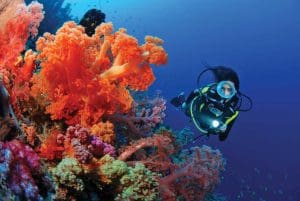
Conservation Efforts:
Recognizing the importance of preserving these fragile ecosystems, Fiji has taken significant steps to protect its coral reefs. Marine protected areas have been established, and sustainable fishing practices are encouraged. Local communities actively participate in coral conservation initiatives, and resorts and dive operators promote responsible tourism practices to minimize the impact on the reefs.
Raja Ampa.
Raja Ampat, located in the heart of the Coral Triangle in Indonesia, is a world-renowned destination for its exceptional marine biodiversity and pristine coral reefs. This remote archipelago comprises four main islands and countless smaller islands, offering a haven for coral enthusiasts and nature lovers alike. Let’s explore the coral reefs of Raja Ampat and discover the incredible wonders they hold.
Coral Diversity:
Raja Ampat boasts an astonishing diversity of coral species, making it one of the most biodiverse regions on the planet. The reefs showcase a stunning array of hard corals, such as table corals, branching corals, and massive corals, which create a complex and vibrant underwater landscape. Soft corals, sea fans, and colorful sponges add to the kaleidoscope of colors and textures found in these reefs.
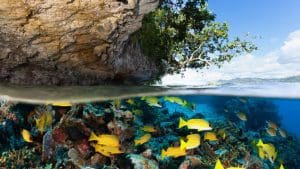
Marine Biodiversity:
The coral reefs of Raja Ampat are teeming with an incredible variety of marine life. Divers and snorkelers have the opportunity to encounter over 1,500 species of fish, including iconic species like manta rays, reef sharks, and schools of vibrant tropical fish. The area is also known for its diverse array of invertebrates, including nudibranchs, sea stars, and anemones. Exploring the reefs of Raja Ampat is like diving into a marine wonderland.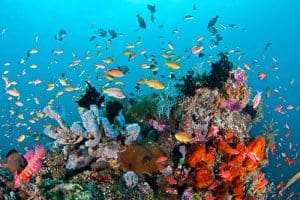
Pristine and Remote Locations:
Raja Ampat’s coral reefs benefit from their remote and relatively untouched locations. The archipelago’s isolation has helped preserve the health and vibrancy of the reefs, making them some of the most pristine in the world. The crystal-clear waters and low levels of human impact contribute to excellent visibility, allowing divers and snorkelers to fully appreciate the beauty and intricacy of the coral formations.
Marine Protected Areas:
Recognizing the importance of conservation, Raja Ampat has established several marine protected areas (MPAs) to safeguard its coral reefs and marine ecosystems. These MPAs help regulate fishing activities, promote sustainable tourism practices, and preserve critical habitats for endangered species. The local communities actively participate in the conservation efforts, ensuring the long-term health and sustainability of the reefs.
Diving and Snorkeling Paradise:
Raja Ampat is a paradise for divers and snorkelers, offering unparalleled opportunities to explore its extraordinary coral reefs. There are numerous dive sites catering to divers of all levels, from shallow reefs suitable for beginners to exhilarating drift dives and underwater pinnacles for more experienced divers. Snorkelers can also enjoy the shallow reefs, observing the breathtaking marine life just beneath the water’s surface.
The Importance of Coral Reefs for Marine Life.
The importance of coral reefs for marine life cannot be overstated. These vibrant and diverse ecosystems play a vital role in supporting the health and sustainability of the oceans. As we have explored, coral reefs provide numerous benefits and are essential for the well-being of marine life.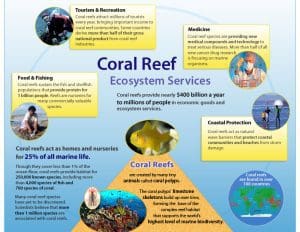
First and foremost, coral reefs serve as critical habitats for a vast array of marine species. They offer shelter, food, and breeding grounds for fish, invertebrates, and other organisms. The intricate structures of the coral provide hiding places and protection from predators, allowing many species to thrive in these ecosystems.
Coral reefs also contribute to the overall biodiversity of the oceans. They support an incredible variety of species, from tiny plankton to large predators, forming complex food webs and ecological interactions. The interconnectedness of the reef ecosystem ensures the survival and balance of many marine populations.
Furthermore, coral reefs play a significant role in maintaining the health of the oceans. They act as natural barriers, protecting coastlines from erosion and reducing the impact of storms and waves. The structure of the reefs helps to dissipate wave energy, safeguarding nearby coastal communities and habitats.
If you want to learn about a fish species that has a connection with coral reefs, click here.

